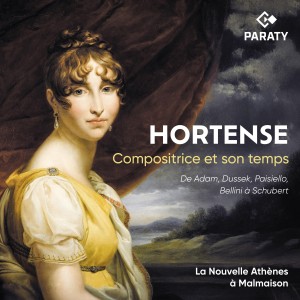
Queen Hortense, composer and her time
If musical history has chosen the famous Viennese trinity “Haydn, Mozart, Beethoven” as the embodiment of classical music, a review of the historical cultural players at the beginning of the 19th century necessarily places the Napoleonic court at the center. Its tastes forged the aesthetics of early French Romanticism, little known to the public today. Queen Hortense, daughter of Empress Josephine, wife of Louis Bonaparte and mother of the future Napoleon III, contributed to this singularity through her own talents as a composer of almost 150 romances and as a patron of the arts alongside Josephine. The salons of the Château de Malmaison were the place of choice, which she sought to reimagine at the Château d’Arenenberg after her exile from France following the fall of the Empire.
This CD – recorded during the 2nd Festival de Pentecôte at Malmaison – is the result of a cultural partnership between the Musée national des Châteaux de Malmaison et de Bois-Préau and La Nouvelle Athènes – Centre des pianos romantiques. It invites you to discover Hortense’s romances, which were very much in vogue at the time, as well as the composers appreciated by the court – Louis Adam, Jan Ladislav Dussek, Giovanni Paisiello, Ferdinando Paer, or Vincenzo Bellini – and others who were inspired by Hortense’s romances, such as Franz Schubert.
Bringing pieces from the repertoire of the Consulate and Empire out of oblivion and letting them be heard by historically informed musicians on period instruments in a historic place like Malmaison, in the very conditions in which this salon music developed, is indeed an all-encompassing experience offered to the visitor. It stems from the same desire for authenticity that lies at the heart of historical refurbishments.
This exemplifies the originality and uniqueness of the musical partnership between La Nouvelle Athènes and the Château de Malmaison. On period instruments – Érard piano 1806, Naderman harp 1815, Rosenberger piano 1825, Fabricatore guitar 1827 – the artists of La Nouvelle Athènes are committed to bringing these seemingly simple romances back to life. Their performance requires knowledge of ornamentation, the art of rubato and the art of varying accompaniments, which together give these works their distinctive musical appeal today.
Sylvie Brély, Director of La Nouvelle Athènes • Élisabeth Caude, Chief Curator and Director of the Musée national des Châteaux de Malmaison et de Bois-Préau

